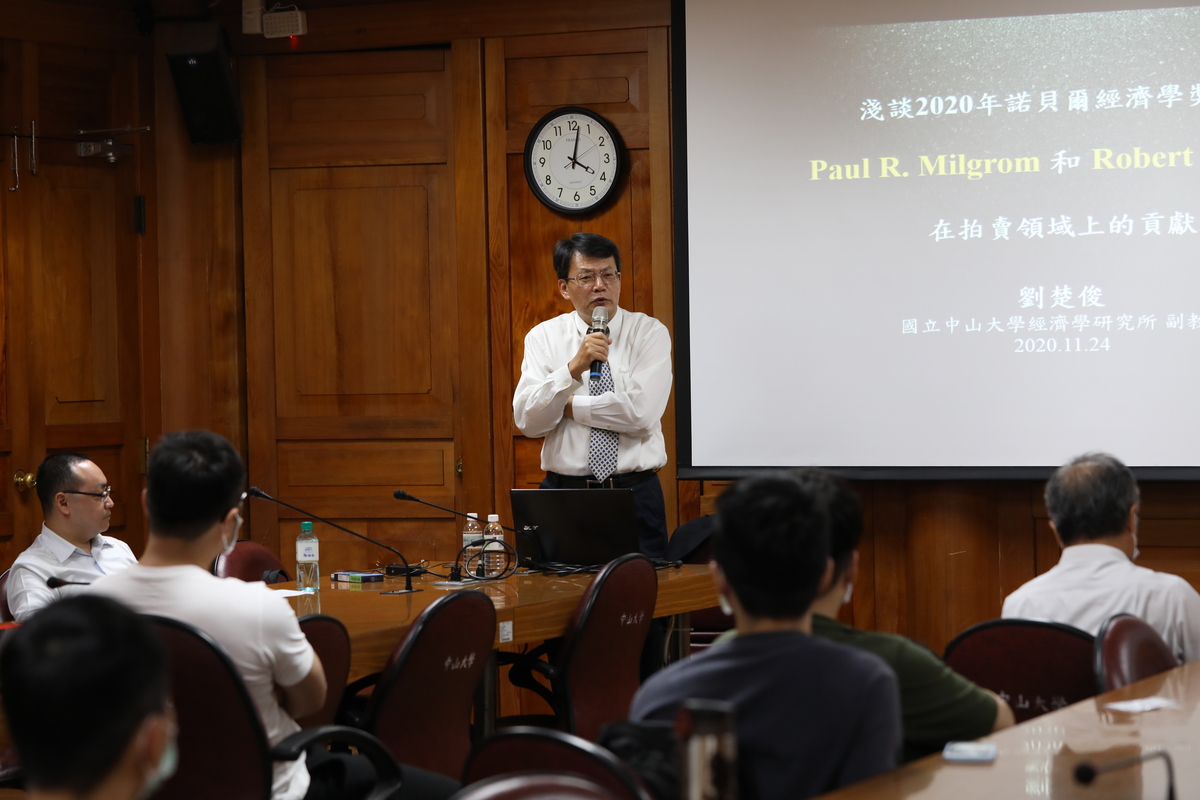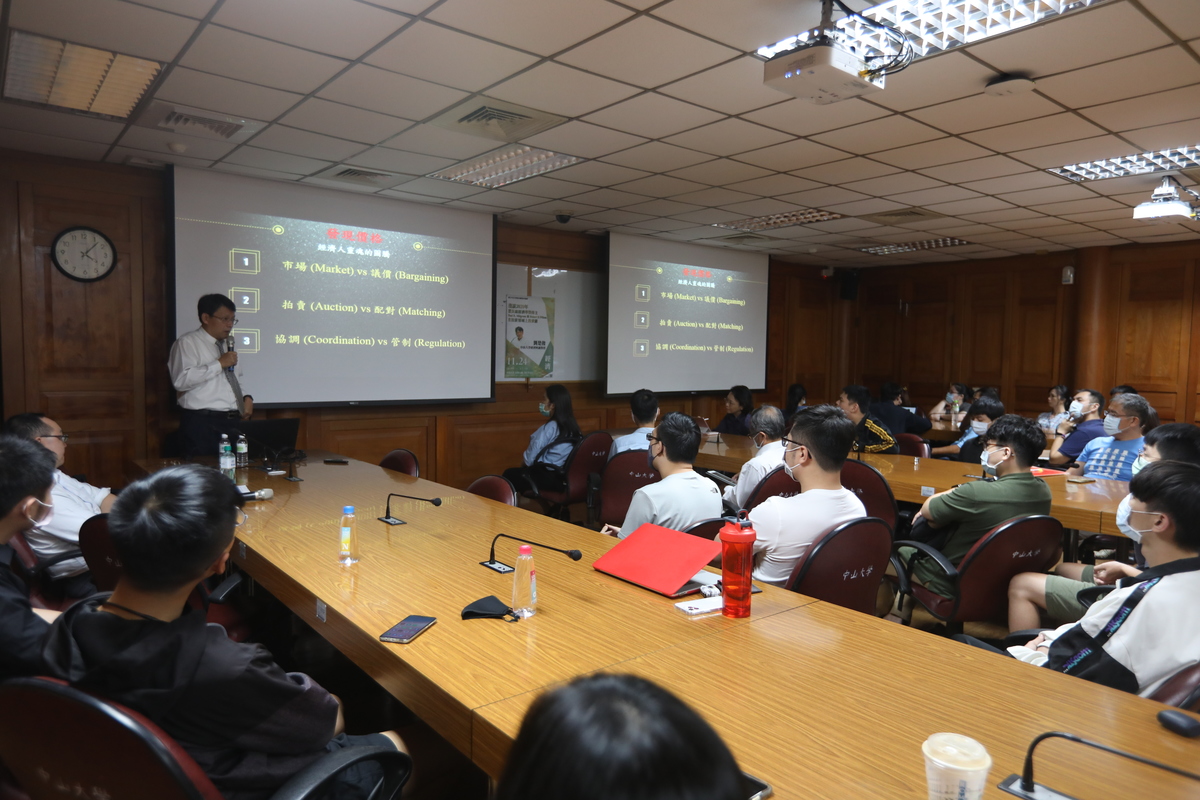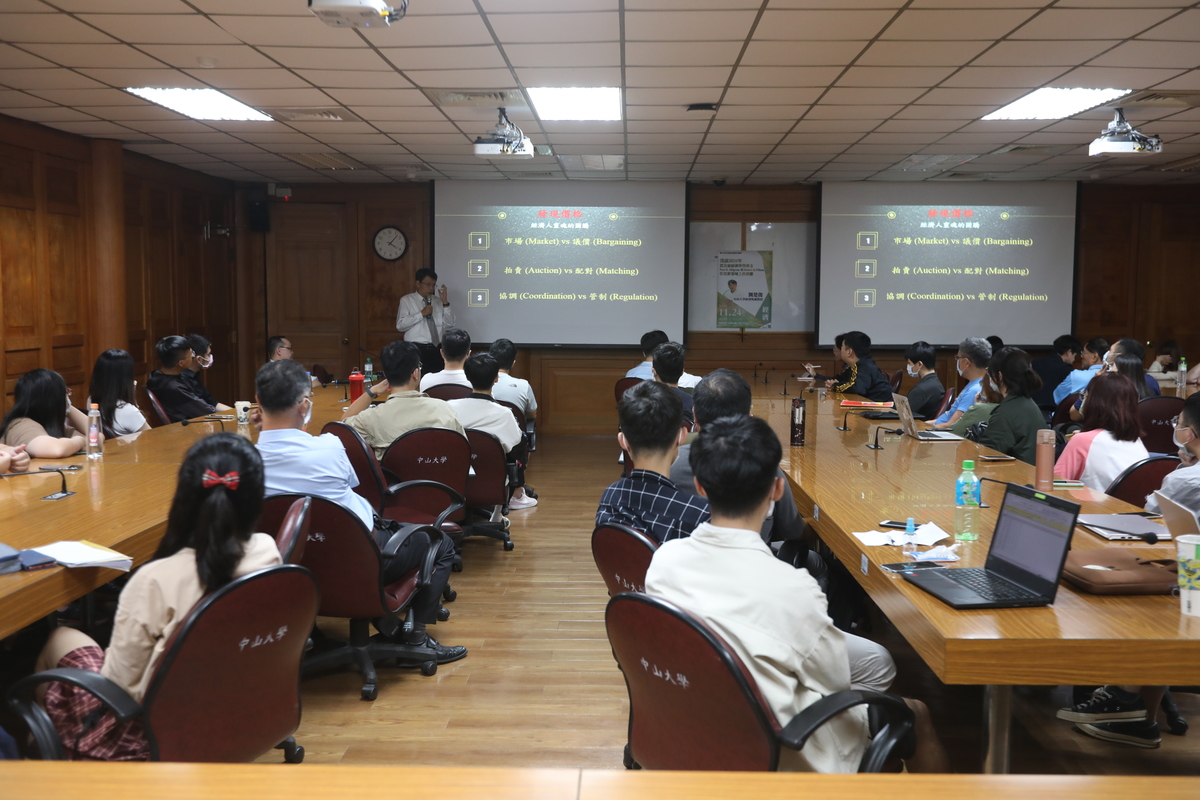From winner’s curse to auction theory: Tru-Gin Liu discusses contributions of Nobel Prize winners Milgrom and Wilson



2021-01-20
(Provided by Teaching and Learning Development and Resources Center) Dr. Tru-Gin Liu shared his points of view regarding the contribution of this year’s laureates of the Nobel Prize in Economic Sciences Paul R. Milgrom and Robert B. Wilson, both affiliated with Stanford University, and their improvements of the auction theory and invention of new auction formats. Starting from the fundamental concepts of economics such as the determination of price and efficiency, Liu pointed out that economists are not only interested in the price discovery process, but also the issue of resource allocation brought about by the process. Both issues can be well illustrated through the improvement of auction theory and its application in the real world. The seminar was part of the series of lectures on Nobel Prize laureates organized by the Teaching and Learning Development and Resources Center together with the colleges of the University.
Liu recalled Milgrom's speech at National Sun Yat-sen University in November 2005 and the meeting with the award winner that he later attended along with his colleagues. Liu was really impressed by Milgrom's insights over the differences in the mechanisms of various online auctions, such as eBay and Yahoo!, which reflected Milgrom's unique observations on online auctions. In addition to these contributions, the laureates actively participated in various auctions, such as spectrum-frequency bands and electricity. The efficiency gains from the transactions of these objects tend to be huge.
Starting with the history of auctions, Liu recounted the famous winner's curse of the auction of throne of the Roman Empire in 193. He mentioned that the theory based on the traditional analysis of a single object usually assumed that all bidders independently evaluate the object leaving "winner's curse" of the winner overpaying unexplained. However, along with the introduction of the concept, the affiliated values, initiated by Wilson, which replaced the independent value assumption, the puzzle has been solved. This is because bidders also receive private information about others' evaluations, which in turn gives the winning bidder an opportunity to modify his/her own evaluation during the bidding process. Liu illustrated the behavior of the bidders in a story for the students to easily understand and appreciate the importance of the auction theory.
As for the question of an object with uncertain value, Liu referred to the critical ideas proposed by Wilson, including the common values, the conditional independence assumption, and the affiliated values. Wilson pioneered the study on the phenomenon of the winner's curse, and put forward more complex strategic thinking, which laid the foundation for Milgrom’s research based on the observations that most auctions in the real world involved both private-value as well as common-value components. Another important contribution made by Milgrom is the proposal of the monotone likelihood ratio property assumption. As Liu explained, together with the assumptions made by the laureates and auction theories thus developed, it can be shown that a bidder will only adopt a monotonic bidding strategy, i.e. the optimal bid will monotonically increase with personal value. As a result, the optimal bidding strategy profile can be solved by a series of first order conditions.
In the end, Liu introduced a variety of empirical studies derived from the concepts proposed by the two scholars, demonstrating that the theory can be applied in many contexts, and presented his reflections on the issue. He explained the different theories and new ideas proposed by the scholars by telling stories and presenting case studies to let the students easily absorb knowledge and gain a broader idea about economics.
(Edited by Public Affairs Division)
(Provided by Teaching and Learning Development and Resources Center) Dr. Tru-Gin Liu shared his points of view regarding the contribution of this year’s laureates of the Nobel Prize in Economic Sciences Paul R. Milgrom and Robert B. Wilson, both affiliated with Stanford University, and their improvements of the auction theory and invention of new auction formats. Starting from the fundamental concepts of economics such as the determination of price and efficiency, Liu pointed out that economists are not only interested in the price discovery process, but also the issue of resource allocation brought about by the process. Both issues can be well illustrated through the improvement of auction theory and its application in the real world. The seminar was part of the series of lectures on Nobel Prize laureates organized by the Teaching and Learning Development and Resources Center together with the colleges of the University.
Liu recalled Milgrom's speech at National Sun Yat-sen University in November 2005 and the meeting with the award winner that he later attended along with his colleagues. Liu was really impressed by Milgrom's insights over the differences in the mechanisms of various online auctions, such as eBay and Yahoo!, which reflected Milgrom's unique observations on online auctions. In addition to these contributions, the laureates actively participated in various auctions, such as spectrum-frequency bands and electricity. The efficiency gains from the transactions of these objects tend to be huge.
Starting with the history of auctions, Liu recounted the famous winner's curse of the auction of throne of the Roman Empire in 193. He mentioned that the theory based on the traditional analysis of a single object usually assumed that all bidders independently evaluate the object leaving "winner's curse" of the winner overpaying unexplained. However, along with the introduction of the concept, the affiliated values, initiated by Wilson, which replaced the independent value assumption, the puzzle has been solved. This is because bidders also receive private information about others' evaluations, which in turn gives the winning bidder an opportunity to modify his/her own evaluation during the bidding process. Liu illustrated the behavior of the bidders in a story for the students to easily understand and appreciate the importance of the auction theory.
As for the question of an object with uncertain value, Liu referred to the critical ideas proposed by Wilson, including the common values, the conditional independence assumption, and the affiliated values. Wilson pioneered the study on the phenomenon of the winner's curse, and put forward more complex strategic thinking, which laid the foundation for Milgrom’s research based on the observations that most auctions in the real world involved both private-value as well as common-value components. Another important contribution made by Milgrom is the proposal of the monotone likelihood ratio property assumption. As Liu explained, together with the assumptions made by the laureates and auction theories thus developed, it can be shown that a bidder will only adopt a monotonic bidding strategy, i.e. the optimal bid will monotonically increase with personal value. As a result, the optimal bidding strategy profile can be solved by a series of first order conditions.
In the end, Liu introduced a variety of empirical studies derived from the concepts proposed by the two scholars, demonstrating that the theory can be applied in many contexts, and presented his reflections on the issue. He explained the different theories and new ideas proposed by the scholars by telling stories and presenting case studies to let the students easily absorb knowledge and gain a broader idea about economics.
(Edited by Public Affairs Division)
Click Num:
Share
